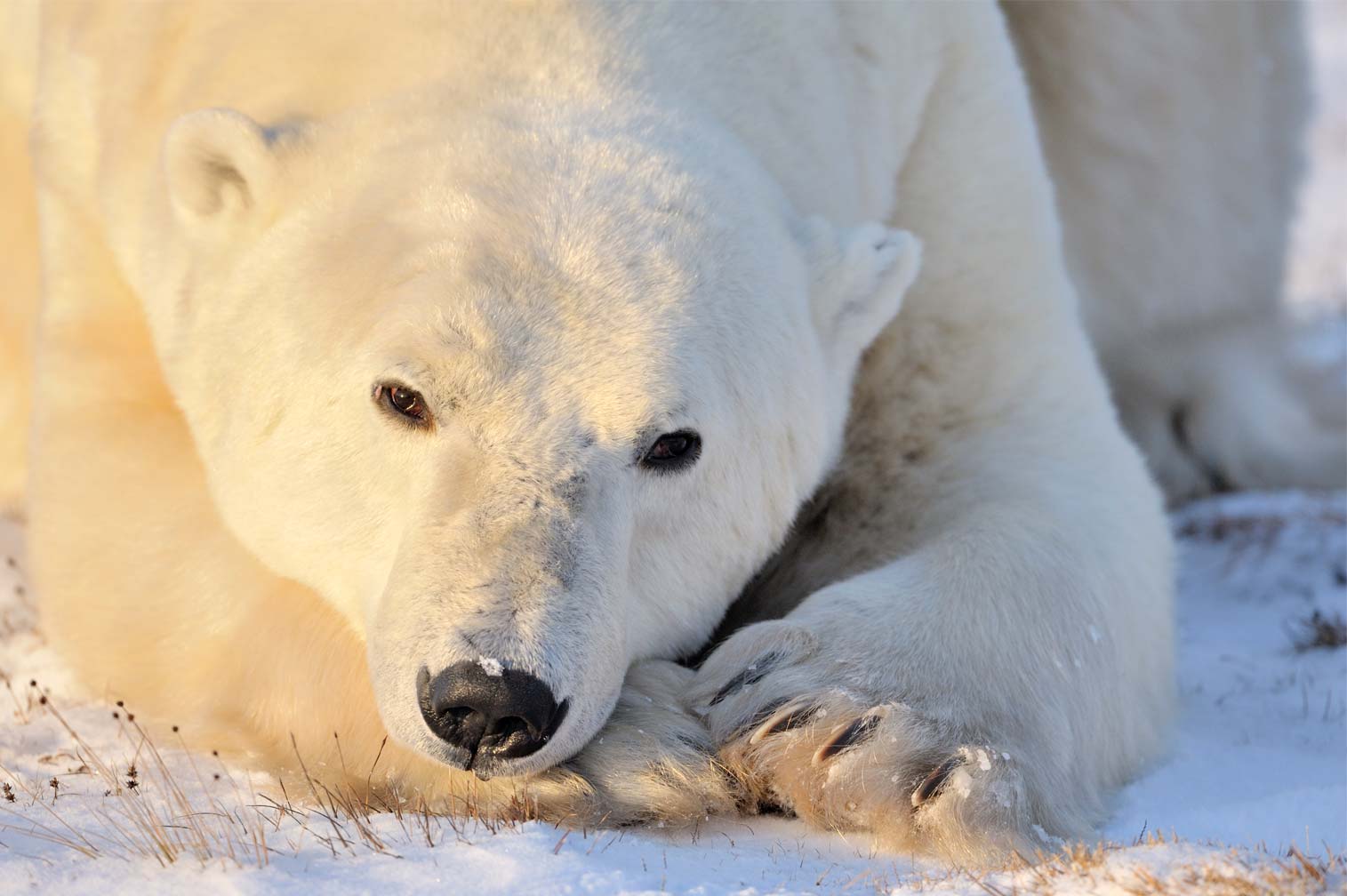Polar bears are native to the lands and waters in the Arctic Circle. Several physical adaptations to preserve heat and help them in their hunt for their prey have allowed them to dominate one of the least hospitable climates on the planet.

Like other animals that live in frigid environments, their limbs are smaller in proportion to the rest of their bodies. They also have smaller ears, tails, and muzzles than other species of bears that live in more temperate climates. This helps them retain heat, since there is less surface area for it to escape from. In fact, they are prone to overheating! It is not uncommon for them to take a dip in the freezing ocean or roll around in the snow to cool off.
A unique key to the bears’ survival is that their bodies have adapted to process a very high fat diet. It is common for adult polar bears to eat only the blubber from their favorite prey, seals. In a pinch, a hungry polar bear will also eat walrus or whale carcasses. They will also scavenge eggs from the nests of sea birds. However, considering that male bears top out at a weight of over 1500 pounds (680 kg), bird eggs don’t even count as a snack!
The bears are famous for their gorgeous coats, which camouflage them in their snowy environment. The fur is not actually white- it’s transparent. This trait helps reflect the light from their surroundings which gives the illusion of a bright white coat. The skin underneath that coat is black, which absorbs more sunlight to keep the bear warm.
Go to https://education.nationalgeographic.org/resource/animals-101-polar-bears for more information, and to see some truly beautiful footage of these incredible animals.
